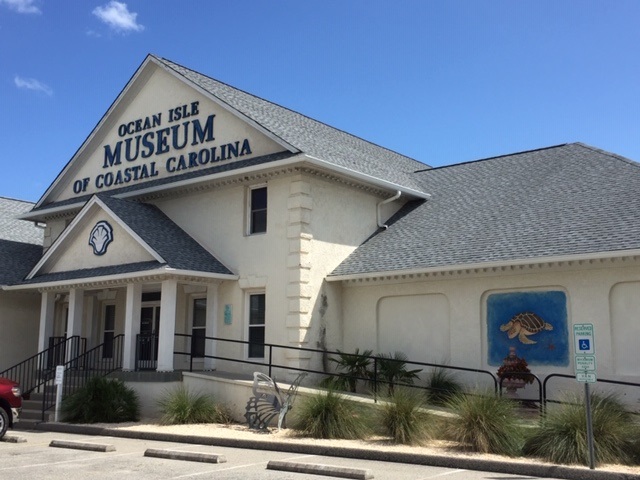
The Museum of Coastal Carolina’s fall schedule goes into full swing with new a new Habitat Hop program, the return of its popular Sea Tales program and Live Touch Tank Feedings.
The Museum of Coastal Carolina shifts to a Thursday through Saturday schedule beginning Aug. 25. Here’s a complete breakdown of what’s on the schedule at the Museum through the month of September:

Touch Tank Feeding
Friday at 11 a.m. With staff and trained volunteer assistance, gently touch the sea creatures living in the Museum’s Touch Tank and watch trained volunteers feed the animals.
Sea Tales
Thursday at 11 a.m. Listen to stories starring animals or exhibits displayed at the Museum and complete interactive crafts or science activities based on each story:
Aug. 28 – See You Later Alligator by Sally Hopgood – A departing tortoise has his bags packed and is almost ready to set out on an adventure, but he can’t leave until he says good-bye to each of his animal friends. The tortoise stops for every last timid mouse and bumblebee, shouting his rhyming good-byes, making you wonder if, perhaps, he’s stalling the start of his trip. His animal friends appear startled as he suddenly pops up on each page to say adieu—especially the perplexed rhinoceros the tortoise mistakes for a unicorn! With each farewell, the tortoise’s good-byes get sillier and more creative. When will the goodbyes end and the adventure begin? We will find out as we read this silly tale. After the story we will make our own tortoise craft.
Sept. 4 – Whose Egg is That? by Darrin Lunde – This clever preschool page-turner pairs seven eggs with information about the animals’ survival mechanisms, asking kids to guess which animal laid which egg. Whose Egg Is That? reveals the animals–ranging from penguins to platypuses–in their own habitats. Discover the different sizes and shapes of bird eggs and make your own bird eggs and nest.
Sept. 11 – Whose Footprint is That? by Darrin Lunde – This clever preschool page-turner pairs seven tracks with information about the animals’ locomotion, asking kids to guess which animal left which tracks behind. Whose Footprint Is That? reveals the animals–ranging from flamingos to kangaroos—in their own habitats. Learn all about animal tracks and use track stamps to make a fun craft.
Sept. 18 – Whose Poop is That? by Darrin Lunde – Poop! Ewwww! No, don’t say “Ewwww.” Ask, “Whose poop is that?” This simple, and yes, charming book asks this question about seven examples of animal poop. By investigating visual clues, young readers can learn to identify the animal through its droppings. For instance, find a sample of poop with bits of bone and tufts of hair. Turn the page to learn it came from a fox! Investigate how scat is used to identify animals and make your own scat using scat ID guides.
Sept. 25 – The Swamp Where the Gator Hides by Marianne Berkes – Under the algae that carpets the swamp, near the duck who paddles in ooze, close to the turtle who takes a snooze . . . hides a gator! Still as a log, only his watchful eyes can be seen. But when gator moves, he really moves! What happens to the duck, the turtle, the egret, the deer, and the many other critters of the swamp when gator makes his move? Search for the gator and get a glimpse of real life in a swamp as we read this tale and make an alligator craft.
Habitat Hop
Saturday at 11 a.m. Explore habitats found along the N.C. coast. Habitat Hop will feature
a new habitat each month and a new species from that habitat each week. Visitors will participate in a series of interactive activities to learn more about plants and animals found in the swamp, deep sea, on the beach, and in their own backyard.
September Habitat: The Green Swamp
The Green Swamp is a local nature preserve and longleaf pine savanna teeming with diverse wildlife. Explore unique species that call the Green Swamp home throughout the month of September.
Aug. 30 – Alligators – These somewhat fearsome reptiles can be found basking near ponds and streambanks. Learn about the life cycle of an alligator, investigate what alligators eat, and discover what makes them amazing predators and the important role they play in their environment.
Sept. 6 – Frogs – Most amphibians start out living in the water and move onto land. Learn about the life cycle of amphibians and the adaptations they develop to live on land and in the water. Then, investigate the different sounds frogs use to communicate and learn how to differentiate their calls.
Sept. 13 – Black Bears – What do black bears eat? What is hibernation? How big is a black bear’s track? Learn the answers to these questions and more about these amazing mammals.
Sept. 20 – Carnivorous Plants – The Green Swamp is home to vast carnivorous plants including Venus flytraps, sundews, and pitcher plants. Learn all about these amazing plants and their unique adaptations and diet.
Sept 27. – River Otters – What is the difference between a river otter and a sea otter? Discover the differences and learn all about the important role otters play in their environment.
The Museum of Coastal Carolina is located at 21 East Second Street in Ocean Isle Beach, NC.
Admission is free for members. Non-member all-day admission effective March 31, 2022 is $10 for adults, $9 for seniors (62+), $8 for children (3-12), and free for age 2 and under.
For more information, call 910-579-1016, visit www.museumplanetarium.org, or like us on Facebook.com /MuseumCoastalCarolina
Ocean Isle Museum Foundation is a 501(c)(3) nonprofit organization that operates the Museum of Coastal Carolina and Ingram Planetarium, and its mission is to inspire curiosity about our unique coastal environment, history and broader natural universe through interactive, fun, and science-based experiences. The Museum of Coastal Carolina, located at 21 East Second Street in Ocean Isle Beach, features a live touch tank, saltwater aquariums, interactive exhibits, lectures and family programs. The Ingram Planetarium, located at 7625 High Market Street in Sunset Beach, includes an 84-seat theater with a 40-foot domed screen where guests enjoy educational films on a variety of topics, traditional star shows, and entertaining music laser shows. For more information, call 910-579-1016 or visit www.museumplanetarium.org.



